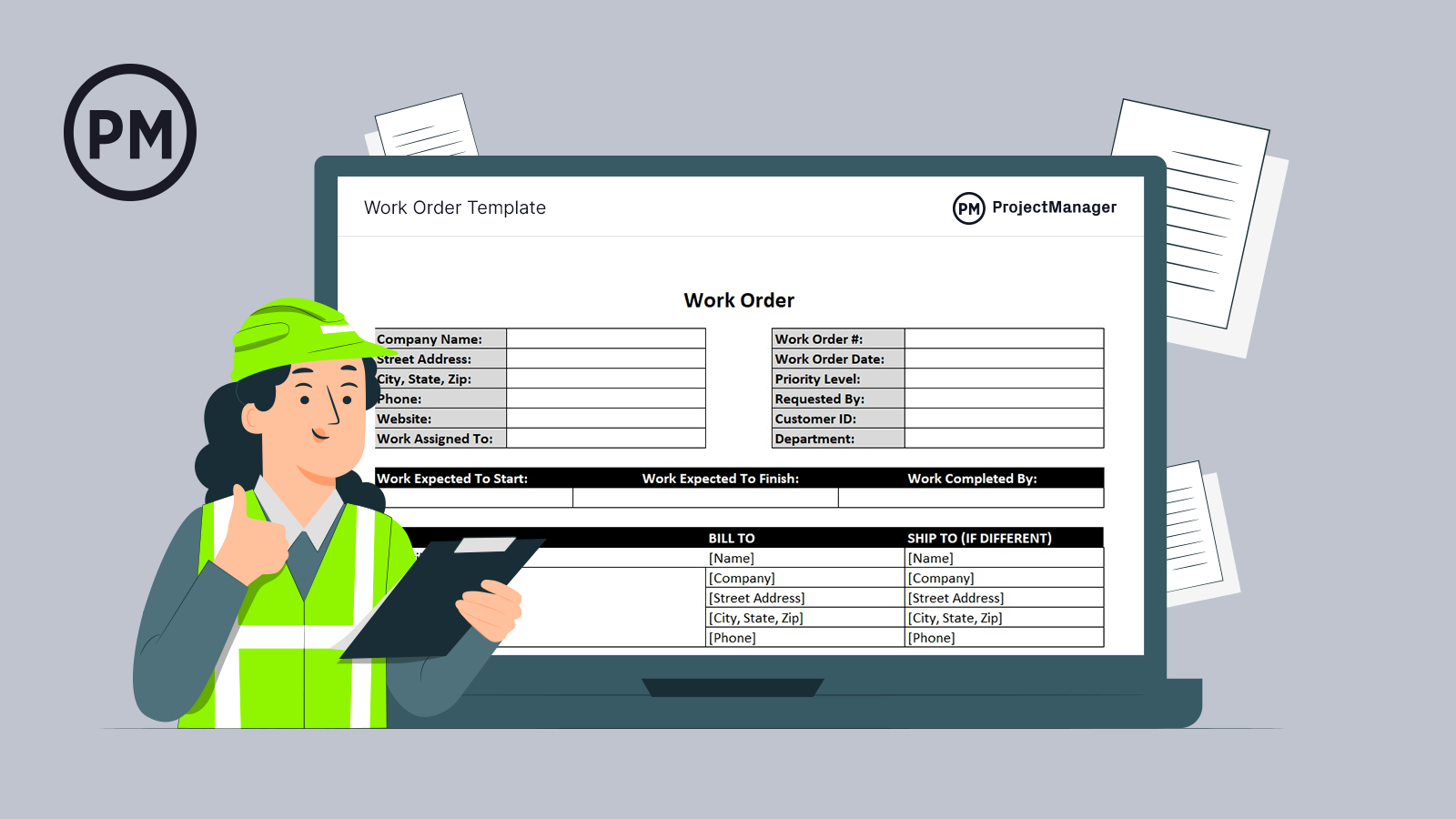
Use this free Work Order Template for Excel to manage your projects better.
Download Excel File

Organizations need to coordinate the efforts of both internal and external teams in order to carry out their operations, execute projects and achieve their goals. But how can they track the work done by each team? That’s where this work order template comes in. It can be used as a basic contract between company and the internal department or external contractor that will carry out the work order.
This work order format is sure to expedite the process and is useful no matter the industry you’re working in. Download our free Excel work order template to organize your requested tasks, make a work order and keep your project running smoothly.
A work order is a document that explains the labor, tools and materials that are needed to complete a task. Generally, the work order also includes instructions on what the job is, an estimation of how much it will cost, the deadline for completion, who is assigned and any other pertinent information.
Work orders are used to establish an agreement between a company and an outside contractor, or they can also be internally used by organizations for cross-department collaboration. Work order formats are often used in manufacturing, but they’re also common in the service and construction industry. They can be assigned to field technicians when installing equipment, for example, as well as when doing maintenance or repair work.
Any organization that needs a tool to create and track work orders can use this template. It serves as a standardized work order format that provides project information, the requested details of the job, necessary updates, due dates and more.
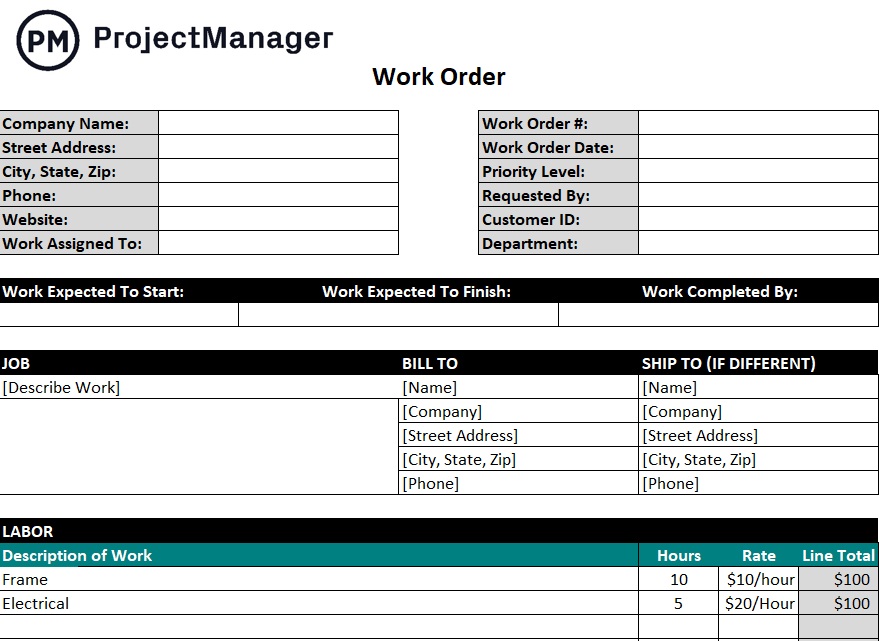
Work order templates communicate tasks and the details of executing them. They’re a governing document that ensures the work is done right and on time. Service providers and anyone working with independent contractors or being tasked by customers will benefit from our free work order template in Excel.
Use a work order template when contracting with an external worker or to process repairs and service jobs.
The work order should be created when assigning the task. In a sense, it’s a bucket to collect all the information necessary to execute the task. When you fill out our free work order template, you’re making an assignment and providing detailed direction on what the job is, including when it should be completed.
Once the work order template is completed and signed it acts as a binding contract. The organization, contractor and customer can refer to it as a roadmap of when the work will be done and how much it will cost. Therefore, while the work order format is sent before any work is executed, it’s referenced throughout the completion of the task.
Let’s now take a look at some work order examples to better understand how you can use ProjectManager’s work order template.
Work orders can be used for many different purposes but they’re mostly used for maintenance planning and construction management.
Construction work orders are used by project owners or general contractors who need to outsource part of the work to a subcontractor who specializes in a specific area of construction, such as electrical work, plumbing or masonry. By using construction work orders, you can better keep track of costs and progress.
Maintenance work orders are used to document all the maintenance work that’s performed in a production line. Typically, maintenance work orders generally begin with a work request, which is submitted by internal teams to the manufacturing department whenever they detect issues that require their attention for either preventive or corrective maintenance.
Work order management is streamlined with the help of project management software. For example, ProjectManager allows you to set labor costs and track contractors’ time on their tasks with secure timesheets, which also help facilitate the payment process. Kanban boards give you transparency into their workflow, and workload charts allow you to balance tasks for greater productivity. Throughout the process, contractors can refer back to their work order attached to the kanban card to make sure they’re fulfilling the agreement.
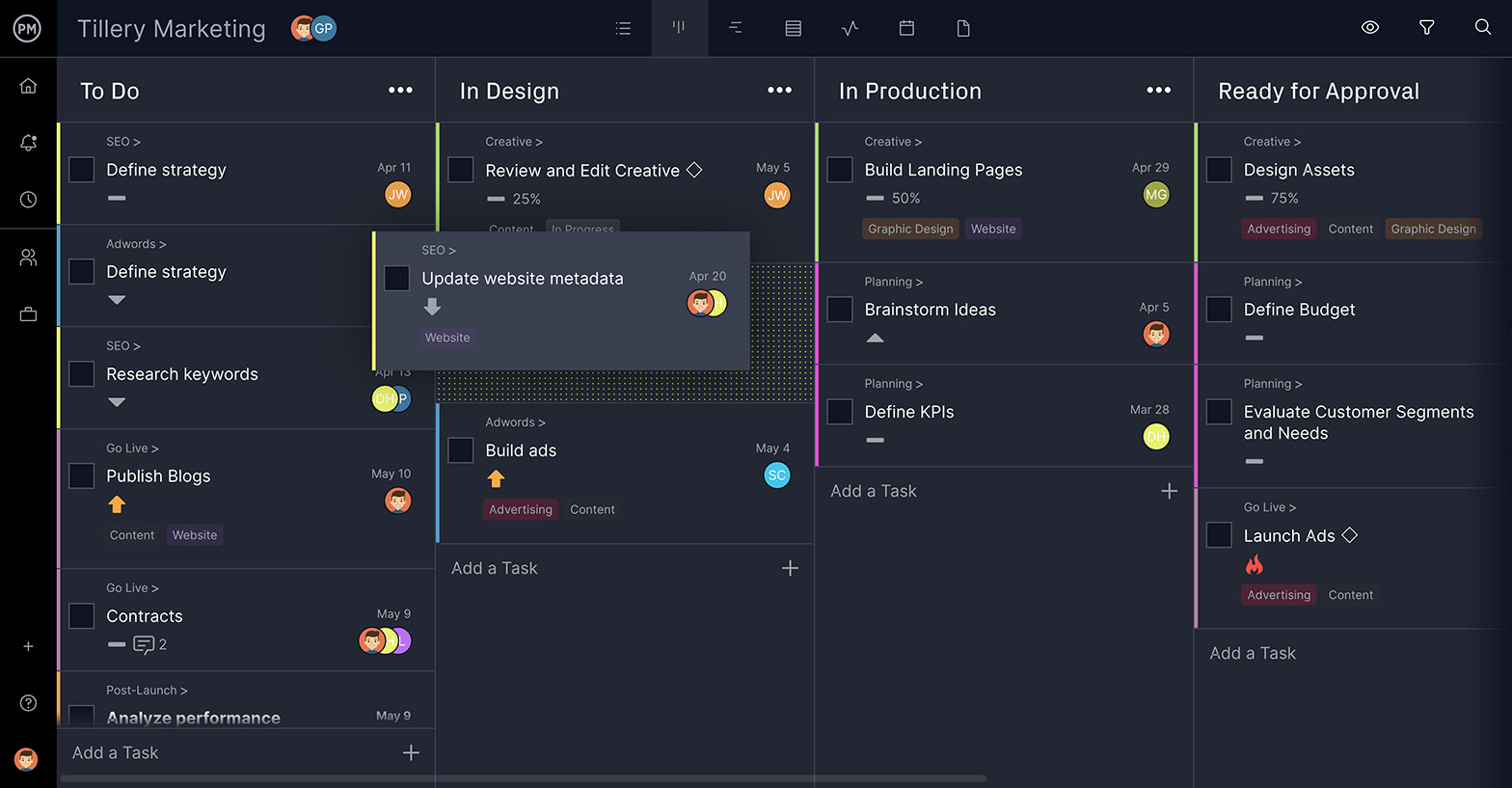
The personnel that creates work orders is traditionally someone in the organization who is responsible for overseeing the completion of the work stated in the work order—typically the project manager. They’ll create the document with the instructions and deadline, among other details.
The contractor is often responsible for detailing their costs, such as labor and materials. The contractor and the manager at the organization come to an agreement and the work order is signed. While the customer is often not involved in the process, they are usually given the final work order to sign off on.
With ProjectManager’s free work order template in Excel, you can streamline your work order management process whether you’re working with contractors or managing your own teams, the work order template is a great tool to capture the details of the work and help you add the costs.Follow these steps to use our free work order template. You can easily customize it with your company logo and any other details you need.
The work order format shows your company name, address and contact info, as well as who the work is assigned to. That is all located on the top left-hand side of the work order template.
On the top right-hand side is more internal data, such as who first created the work request, the priority level for the work order and a number to make it easy to track and search for. There’s also space for other basic work order tracking information such as the date when it was issued.

This section displays 3 key dates for your work order. First, define when the work is expected to start and when it should be finished. This is followed by a window in which the actual completion date can be noted so you can track the completion of your work orders.

At the top of this section is a space to describe the tasks to be performed to fulfill the work order. Describe in as much detail as possible what will be done so there’s clear guidance for the contractor or internal team to execute the work. Then, specify who to bill and when to ship, if necessary. Shipping costs can be added at the end of the work order template.

Under the labor section, there are several rows to write down what the work will entail, how many hours it should take and the rate per hour. Simply enter the hours and the rate, and our work order template will calculate the total labor cost for you.

Underneath labor is the materials section, which again has rows to write down the quantity, the price per unit and tax for each raw material that’s needed for the work order. Once you’ve added a price, quantity and tax value, our work order template will calculate your material costs automatically.
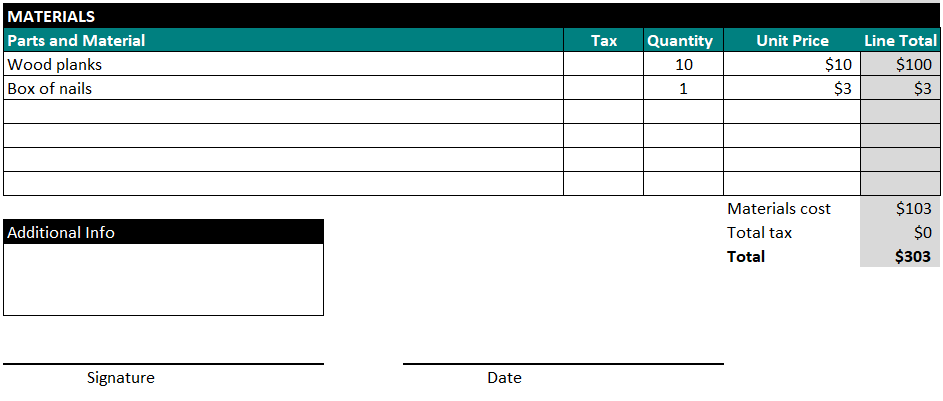
Tax rates might vary depending on your location, so make sure you check your local legislation to determine how your work order should be taxed. At the bottom of the work order format, there’s a field where you can add the amount to be charged to the customer as taxes.
The last section includes a box to add any additional information not covered above. There’s also a place to add a signature and date to the document.
While our work order template is a good tool to get started with work orders, it’s advisable to use a work order management system that automates the process for you and lets you collaborate with your team in real time, unlike Microsoft Excel. Here’s how you can use ProjectManager for more dynamic work order management.
ProjectManager is award-winning software that organizes work for greater efficiency. Our tool has task management and resource tracking features that address every phase of a project and can help you collect and monitor work orders to keep your organization on track. Here are some of the features you can use for work order management.
Use our kanban board to follow your work orders as they move through the different stages of production. Kanban boards visualize workflow by creating customized columns, such as to do, doing and done, underneath which are stacked cards that represent tasks or work orders.
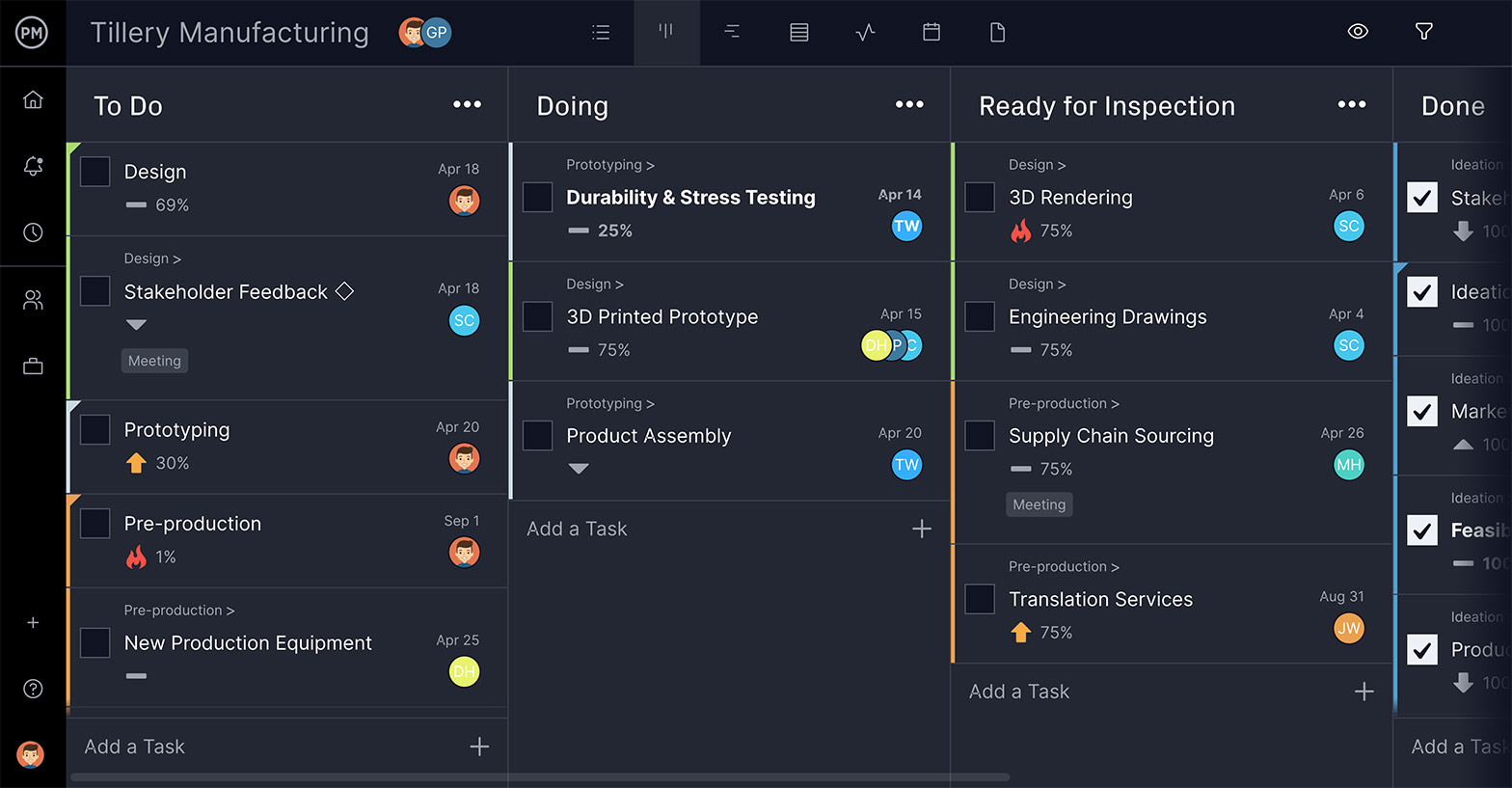
Because our software has unlimited file storage any images or documents can be attached to the kanban card. In fact, all your work orders can live on the software, so you have a centralized hub to find what you need when you need it.
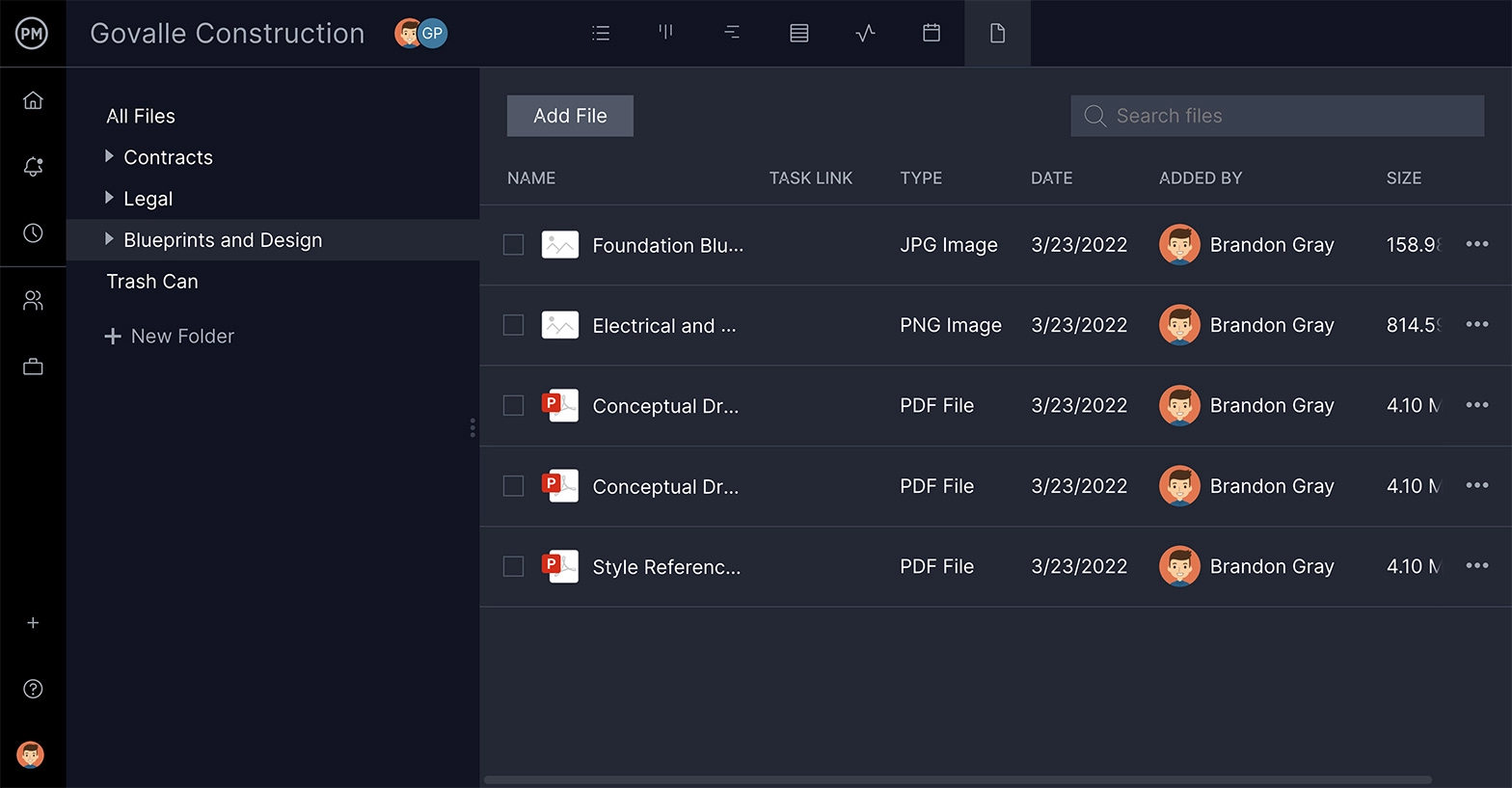
To facilitate payments and track the hours your contractors are spending working on their tasks, use our timesheet feature. Timesheets are easy to use, allowing users to auto-fill tasks as they’re assigned and even add recurring ones from the previous week. As contractors update their timesheets managers can track progress.
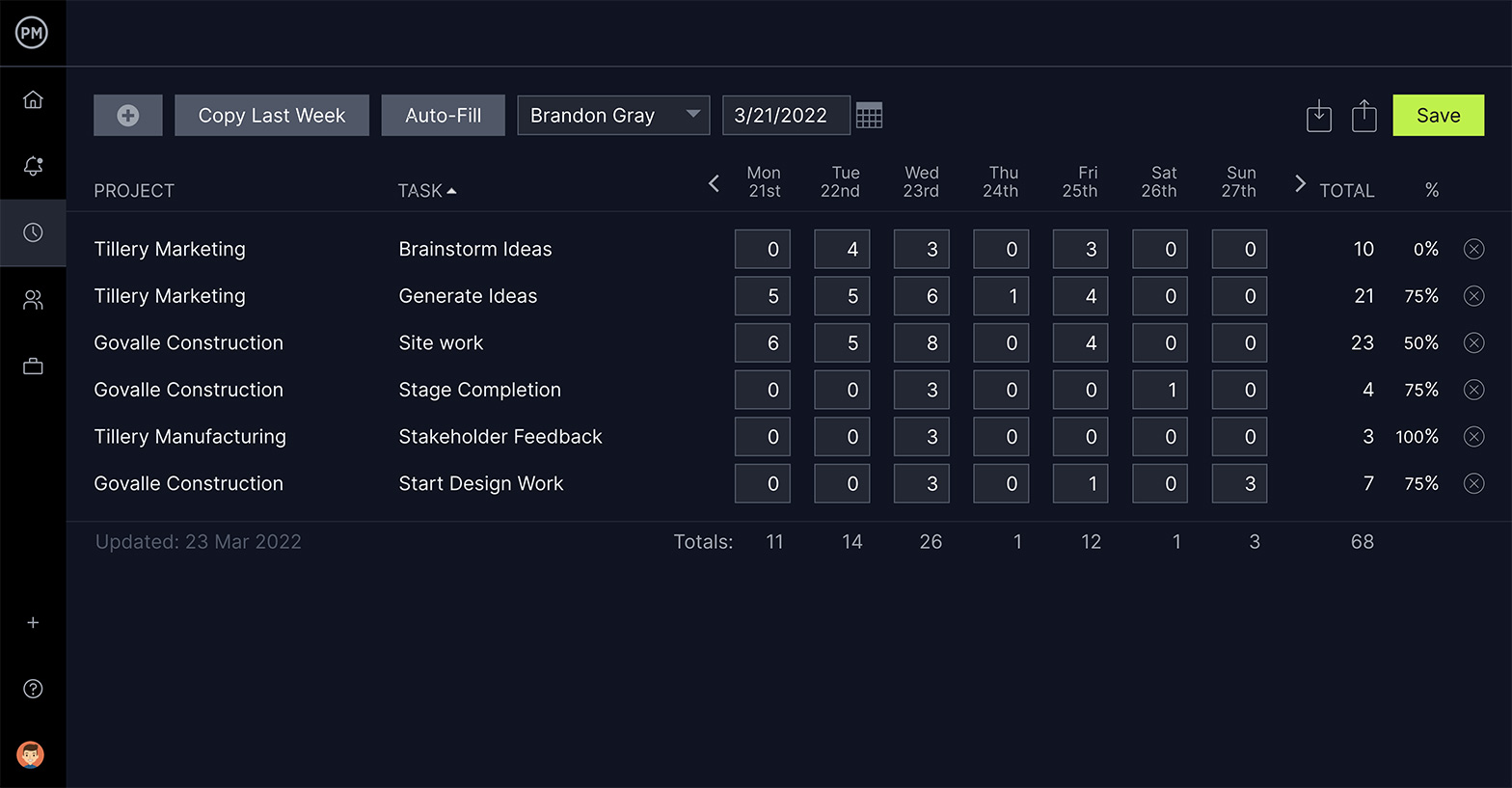
If you’re still not ready to take a free trial of ProjectManager to take advantage of its advanced work order tracking features, you might want to try other of our free templates.
If you’re looking to expand your templates to include others related to working with contractors, ProjectManager has a library of free project management templates that touch on every aspect of the trade. The following are two that relate to work orders. Here are some free templates that relate to work orders.
A statement of work is a detailed description of the tasks and work packages that will be executed for a project. Our statement of work template is a great tool if you’re looking to provide more details for your client, contractor or stakeholders.
A purchase order is a document that is sent by buyers to suppliers of goods or materials to establish a purchase agreement between the parts. It’s likely that you’ll need one to acquire the materials needed for the execution of work orders.
A change order is a document that can be used to change the existing conditions of a contract. However, it must be first approved by a change control board, or whoever is responsible for approving such changes in your organization.
The RFQ template facilitates the procurement process by helping you whittle down which suppliers can meet your price point and schedule. This template is often used in conjunction with the request for proposal (RFP) and the request for information (RFI).
When you’re negotiating a contract or after you’ve settled into an agreement, but still have a question about the work, the RFI is the mechanism that posts questions and returns with answers. Our free RFI is an essential tool in keeping the lines of communication open.
A work breakdown structure (WBS) is a fundamental tool when managing work. Before you create or approve work orders, make sure you check your project’s WBS. This free work breakdown structure template is a great place to start gauging your project scope.
ProjectManager is online software that can manage your work orders and so much more. Features to help you plan, monitor and report on your projects from start to finish, big and small, boost productivity. Balance workloads, see availability and link task dependencies to add efficiencies and avoid bottlenecks. Try ProjectManager today with this free 30-day trial.
Deliver faster, collaborate better, innovate more effectively — without the high prices and months-long implementation and extensive training required by other products.